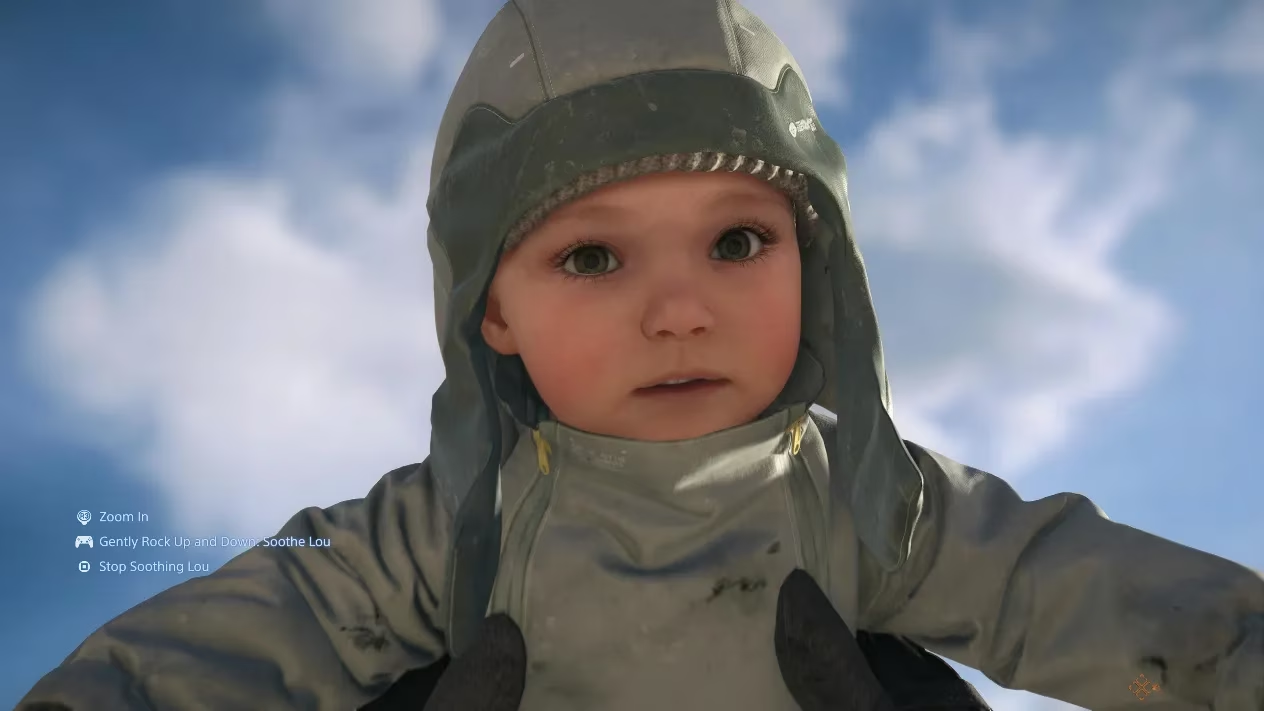In Death Stranding 2: On The Beach, released earlier this year, Lou returns as an essential companion for players traversing the fractured world. The relationship between the protagonist and this bridge baby (BB) continues to be a cornerstone of both gameplay mechanics and emotional storytelling. As players journey across post-apocalyptic landscapes, properly caring for Lou becomes not just a gameplay necessity but a compelling narrative element that reinforces the game's themes of connection and responsibility.
Understanding Lou's Function
Lou serves a critical purpose in Death Stranding 2, primarily helping players detect BTs (Beached Things) - the supernatural entities that pose significant threats throughout the game. However, Lou isn't merely a detection tool; they're portrayed as a sentient being with needs and emotional states that require attention.

When properly cared for, Lou remains in a neutral or happy state, providing clear detection of BTs and making the Odradek scanner more precise. This symbiotic relationship requires players to balance their mission objectives with Lou's wellbeing - a gameplay mechanic that brilliantly reinforces the game's themes of interdependence.
Soothing Techniques
When Lou becomes distressed, several methods can help restore their comfort levels:
-
Rocking Lou in Your Arms - The primary and most effective method involves:
-
Holding L1 to open your compass
-
Pressing down on the D-pad to detach the BB pod
-
Gently rocking Lou using either:
-
Motion controls (default setting)
-
Left analog stick (can be changed in settings)
-
-
Speed Thrills - Surprisingly, Lou enjoys adrenaline rushes! Taking a tri-cruiser and activating its speed boost can delight Lou, even earning you some likes as a reward.
-
Private Room Rest - Returning to a private room will automatically reset Lou to a neutral emotional state, though this should be considered a last resort rather than regular care.
Remember that rocking Lou requires gentleness - excessive shaking can worsen their mood rather than improve it. Isn't it remarkable how the game implements these nurturing mechanics to foster an emotional connection between player and virtual child?
When Lou Gets Upset
Lou's emotional state progresses through several distinct stages of distress, each affecting gameplay in significant ways:
| Emotional State | Visual Indicator | Gameplay Effect |
|---|---|---|
| Happy/Neutral | Normal appearance | Optimal BT detection |
| Mildly Upset | Begins crying | BT detection works but crying attracts enemies |
| Distressed | Shadowy appearance | Reduced effectiveness |
| Severely Distressed | Tentacle mass replaces BB | Complete shutdown of detection abilities |
Several factors can trigger Lou's distress:
-
Being shot at or struck by enemies
-
Falling and dropping cargo
-
Prolonged proximity to BTs
People Also Ask
Can Lou permanently die in Death Stranding 2?
No, unlike some game companions, Lou cannot permanently die. However, their functionality can be temporarily disabled when severely distressed, leaving you vulnerable to BT encounters.
Does Lou develop or change throughout the game?
Without spoiling the narrative, Lou does experience character development throughout the story, with their relationship with the protagonist evolving in meaningful ways that reflect the game's themes.
Are there any special items that help keep Lou happy?
While the game doesn't feature specific items solely for Lou's happiness, creating a safer journey by avoiding combat and falls indirectly contributes to Lou's wellbeing.
The Future of Virtual Companions
As we approach 2026, Death Stranding 2's implementation of Lou represents a fascinating evolution in how games create emotional investment in non-player characters. The way Kojima Productions has designed Lou's care mechanics feels like just the beginning of what's possible.
I can't help but wonder how future games might expand on these systems - perhaps incorporating AI that learns player behaviors to create truly unique companion relationships. Will we see companions whose development is permanently shaped by our care patterns? Or perhaps companions who remember and reference specific moments of care (or neglect) throughout the game?
The relationship between player and virtual child in Death Stranding 2 pushes boundaries in gaming's emotional landscape. It asks us not just to protect a character for gameplay advantages, but to nurture them as we would a real dependent. In doing so, doesn't it teach us something profound about connection in our increasingly isolated world?
For players embarking on this journey through Death Stranding 2's haunting landscapes, remember that Lou is more than a gameplay mechanic - they're the emotional core of an experience that continues to challenge our understanding of what games can make us feel. How we care for Lou ultimately reflects how we approach the game's central question: in a broken world, what connections truly matter?
As you traverse the fractured America of Death Stranding 2, take moments to care for your bridge baby. After all, in a world filled with danger and isolation, the bond between you and Lou might be the most human element of all.
